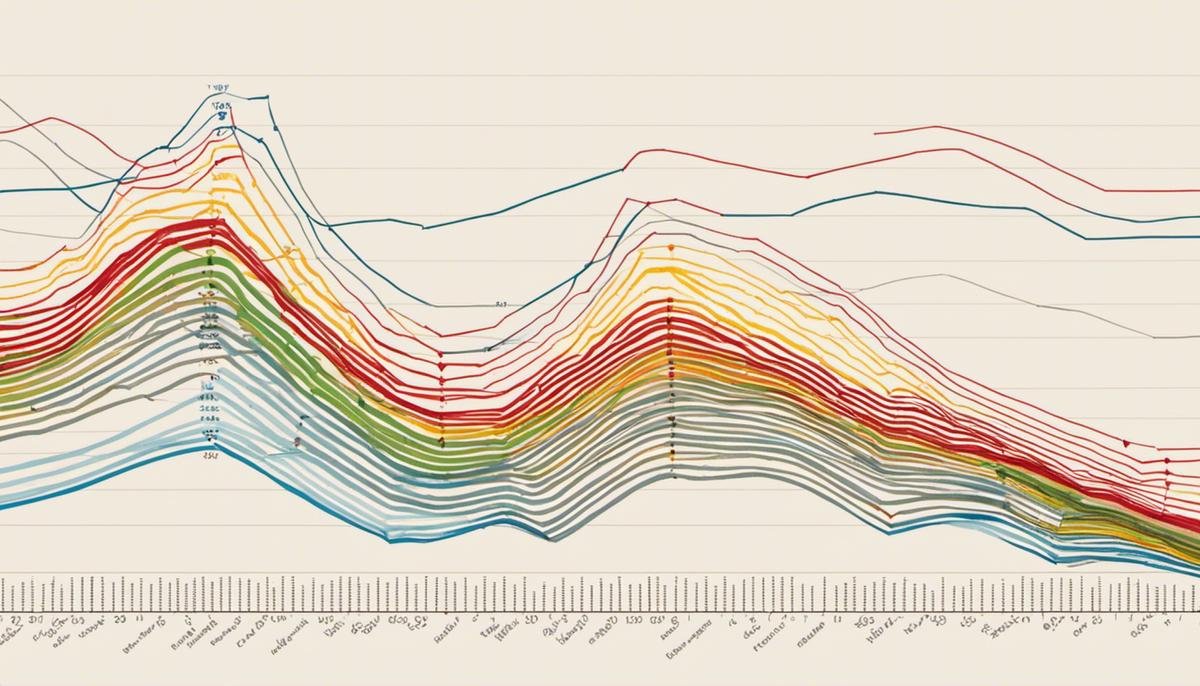
Autism Spectrum Disorder (ASD), a frequently misunderstood and complex neurological disorder, impacts the lives of approximately one in fifty-four children today in the United States. This condition exhibits itself through a diverse range of symptoms and characteristics, one prominent feature being unusual fluctuations in energy levels. Understanding the correlation between autism and energy can provide key insights into the behavior and lifestyle of individuals living with this disorder. Spanning physical, mental, and emotional energy, the exploration of energy in autism reveals fascinating yet often perplexing patterns. This discourse navigates the terrain of autism and its relationship with energy; starting with an essential understanding of ASD, moving onto the inconsistencies witnessed in autistic energy levels, before delving into tangible factors influencing these energy fluctuations and offering practical advice for managing these energy surges and slumps in everyday life.
Understanding Autism and Energy
Navigating Energy Levels in Children with Autism: A Parent’s Guide
If you’re a parent of a child with autism, chances are you’ve noticed some unpredictable patterns related to their energy levels. This fluctuation might be puzzling; one minute your child might be engaging with boundless enthusiasm, while the next may bring an unexpected bout of fatigue. But not to worry, as navigating through these roller coasters of energy is optimizable, thanks to our deeper understanding of autism.
Understanding Autism Spectrum Disorder (ASD)
Autism Spectrum Disorder (ASD) refers to a broad range of conditions characterized by difficulties with social skills, speech, and nonverbal communication, coupled with unique strengths and differences. But here lies its heterogeneous nature: no two people with autism exhibit the same symptoms or behaviors, and this extends to energy levels as well.
Autism and Energy Levels
In children with autism, energy levels can swing from hyperactive episodes to sudden lethargy. There, certainly, is a science behind this.
The nervous system of an autistic child processes sensory input differently and hence, environmental factors, interacting with people, or any form of sensory stimuli can lead to periods of heightened energy. In other words, their unique sensory processing can turn normal stimuli into a high-octane fuel for their energy levels.
On the other end, excessive stimuli or an overwhelming situation may lead to short-circuiting of this energy pace, leading to sudden exhaustion, sensory overload or meltdowns. That’s why quiet places and downtime often become crucial for children with autism.
The Role of Sleep
Unpredictable energy levels in autistic children can also be attributed to irregular sleep patterns. These children often experience issues with falling asleep, staying asleep, or excessive daytime sleepiness. A lack of proper rest might manifest as low energy or lethargy during the day.
Managing The Energy Levels
Understanding these varying energy levels is just the first step. As caregivers, we may not control these fluctuations fully, but we can certainly establish routines to shape them beneficially.
- Consistent Schedule: Maintain a consistent daily schedule to provide a sense of security and predictability which can help moderate energy swings.
- Balanced Diet: Proper nutrition can have a significant effect on your child’s energy levels. Consult with a dietician to plan a balanced meal that suits your child’s needs.
- Physical Activity: Regular physical activity can help burn off excess energy and improve sleep patterns.
- Relaxation Techniques: Teach your child relaxation techniques, like deep-breathing or stretching, which can help them unwind during moments of sensory overload.
- Good Sleep Hygiene: Encourage a bedtime routine to improve sleep quality. This could include a quiet activity before sleep, a dark and quiet room, and regular sleep and wake times.
Parenting a child with autism is a journey. For all the challenges – like juggling these fluctuating energy levels – there are joys as well, and every moment leads to a deeper understanding of your child. As parents, let’s remember – we are not alone; as families, we keep learning and growing, together.

Inconsistencies in Energy Levels in Autistic Children
Navigating Energy Fluctuations in Autistic Children: Recognizing Patterns and Strategies
Autistic children, just like any other kids, experience fluctuations in energy levels throughout the day. However, for children on the autism spectrum, these changes can be more extreme, and sometimes unpredictable. Recognizing and understanding these patterns can play a huge role in both the child’s life and family dynamic.
One crucial factor to consider is the impact of sensory stimuli on energy levels. Autistic children often show heightened sensitivity to sensory inputs such as noises, lights, and textures. Too much sensory stimulation can lead to an overwhelming surge of energy, causing agitation or hyperactivity. Conversely, minimum stimuli might result in low energy states or seeming lethargy. Observing how your child responds to different sensory environments can help you predict and manage energy spikes and dips.
Another important aspect relates to emotions and stress. Autistic children might find processing emotions more challenging, leading to significant energy consumption. An emotionally charged situation might cause an energy spike followed by a crash as the child works through the emotions. Being aware of your child’s emotional state can help anticipate these fluctuations.
Remember, every child’s energy patterns are unique. What works for one might not work for another. Gathering data about your child’s day-to-day activities, behavior, and environmental conditions can offer insight into their distinct energy patterns. This could include tracking meals, sleep patterns, activities, and reactions to different situations. A visual representation can help spot trends and determine strategies to better manage energy fluctuations.
Behavioral strategies, rooted in Applied Behavior Analysis (ABA), can also be beneficial. They can provide structured methods to help autistic children manage energy levels efficiently. Methods can involve clear communication about activities, reinforcing quiet times, or breaking tasks down to more manageable portions to avoid overwhelming the child.
Occupational therapists can offer targeted strategies to assist with energy management. This might involve sensory integration therapy, helping children become more accustomed to different sensory stimuli, thus reducing drastic fluctuations in energy.
Collaboration with specialists such as a pediatric neurologist, nutritionist, or a sleep specialist might also be necessary. These professionals can help identify any underlying conditions contributing to the energy fluctuations, such as sleep disorders or nutritional deficiencies, and suggest respective interventions.
In conclusion, managing energy fluctuations in autistic children involves a holistic approach. By equipping ourselves with increased awareness, dedicated observation, and a host of strategies, we can help our children navigate the world in a way that suits their unique needs. After all, embracing these differences completely and understanding individual patterns are essential steps towards a happier, healthier family life.

Factors that Influence Energy Levels
Though sleep, consistent schedules, diet, and physical activity greatly contribute to managing energy levels of autistic children, other factors often play a significant role. Diving a little deeper into the topic, it’s crucial to understand that emotional and sensory stimuli, along with professional guidance can do wonders in overcoming the energy challenges in autistic children.
Having a child with autism spectrum disorder might mean they are highly responsive to sensory stimuli. This can drastically affect their energy levels, since intense experiences involving sight, sounds, and touch might lead to exhaustion or hyperactivity. By controlling the exposure to sensory stimuli and creating a secure, calm environment, it’s possible to manage these swings in energy more effectively. Simple changes at home like using dimmed lights, quiet spaces, and non-irritating textiles can greatly help in regulating sensory overload and hence, energy levels.
Likewise, how an autistic child processes emotions and stress is crucial. Frequent emotional outbursts can deplete their energy rapidly. Therapy and counseling can be beneficial to help them understand, communicate, and manage their emotions better, which in turn may result in more predictable and manageable energy levels.
Gathering data is another essential approach to understanding and managing energy levels in autistic children. Observing daily patterns and recording them can provide an invaluable source of information. It can show correlations between specific activities, events, or triggers and the child’s resulting energy levels. This information can be a powerful tool when deciding on energy management strategies.
Speaking about management strategies, behavioral strategies are incredibly beneficial. Strategies like positive reinforcement, teaching self-regulation, and employing reward systems can assist in encouraging balanced energy levels.
In some cases, the help of a specialist will be needed. Occupational therapists can work hand in hand with families to customize strategies that aid in energy regulation. They may include sensory integration tactics and routine adaptations, amongst others.
Other specialists may bring different expertise to the table. This could include pediatric neurologists, nutritionists, and sleep specialists. Collaboration with these professionals often plays a major role in energy management for autistic children.
Lastly, remember that a holistic approach to managing autistic children’s energy levels is paramount. A one-size-fits-all approach never works – considering all individual elements and treating them in a collective, consistent way ensures the best results for managing energy levels. Think of this process like a jigsaw puzzle, where each piece supports another; creating a complete, effective solution for managing energy levels in autistic children. This optimal approach characteristically stems from the love, patience, and commitment of those caring for children on the autism spectrum. So, let’s keep exploring, learning, and implementing the best possible tactics to navigate the beautiful journey called parenthood.

Managing Energy Levels in Everyday Life
Addressing the Emotional Well-being of Children with ASD
Much attention has been paid to the physical and behavioral aspects of autism spectrum disorder (ASD) in children, while the emotional well-being is often overlooked. Remember, emotions play a significant role in energy levels. Engaging in activities that promote emotional well-being can be beneficial in keeping energy levels balanced.
Children with ASD can be sensitive, experiencing heightened emotions which can subsequently lead to an increase in energy levels. It is crucial for parents and caregivers to recognize these emotions and manage them effectively. Promoting positive emotions and self-expression can be instrumental in managing energy fluctuations. Simple activities like journaling, drawing, and playing music which aid in expressing emotions can be introduced.
Promoting Social Interaction for Regulating Energy Levels
Children with ASD often feel more energetic when they engage in social interactions. In as much as some children on the spectrum may find socializing challenging, structured social activities can be a great way to expend extra energy. Joining a club or structured play with peers can make a positive impact on them.
Incorporating Therapeutic Strategies
Therapeutic strategies can be an excellent tool in managing energy levels. For instance, Cognitive Behavioral Therapy (CBT) can teach the child new skills to manage their energy levels better. Play therapy can also serve as an outlet for energy while simultaneously developing social and interactive skills.
It is also beneficial to consider the use of Assistive Technology (AT). Devices like sensory swings or weighted blankets can provide soothing sensory input that can calm overstimulated energy levels.
Involving the Wider Support Network
Involving the wider support network, including teachers, can significantly aid in managing the energy levels of an autistic child. Teachers can monitor energy fluctuations during school hours and implement appropriate strategies as required. Sharing strategies with them will ensure they understand how to help manage your child’s energy at school and promote consistency.
Investing in Personalized Professional Support
A specialized support worker or Personal Support Worker (PSW) trained in understanding ASD can help tailor strategies specific to the child’s needs. These trained professionals understand that each child is unique and will have their unique energy patterns. Examples of strategies may include introducing set routines or identifying potential energy triggers.
Conclusion
Managing energy levels in children with ASD can seem overwhelming, but with dedication, patience, and an arsenal of well-researched techniques, it is entirely feasible. Always remember, what works for one child might not be effective for another. It’s all about finding the right balance and strategies that best suit your child.
An important reminder is that every child with ASD, just like any other child, deserves love, patience, and understanding. The energy levels may fluctuate – sometimes plummeting low and other times skyrocketing high. But with the right tools, these can be managed effectively. You are not alone in this journey. There is a whole community of parents and expert caregivers ready to support you every step of the way.

As the intricacies surrounding autism continue to unriddle, it becomes clear that energy patterns in autism are as individual as the children themselves. It’s a delicate dance of managing sleep routines, diet, sensory input, emotional and social engagement – all of which can significantly affect a child’s energy balance. Armed with awareness, understanding, and thoughtful strategies, parents and caregivers can help their autistic child live a balanced and fulfilled life. This journey, while sprinkled with challenges, opens up new avenues to understand and experience the world of autism, offering rewarding insights into the incredible resilience, tenacity, and ingenuity of these remarkable children. The energy within autism might remain an enigma, but unraveling it one day at a time can be an enlightening and empowering journey.




